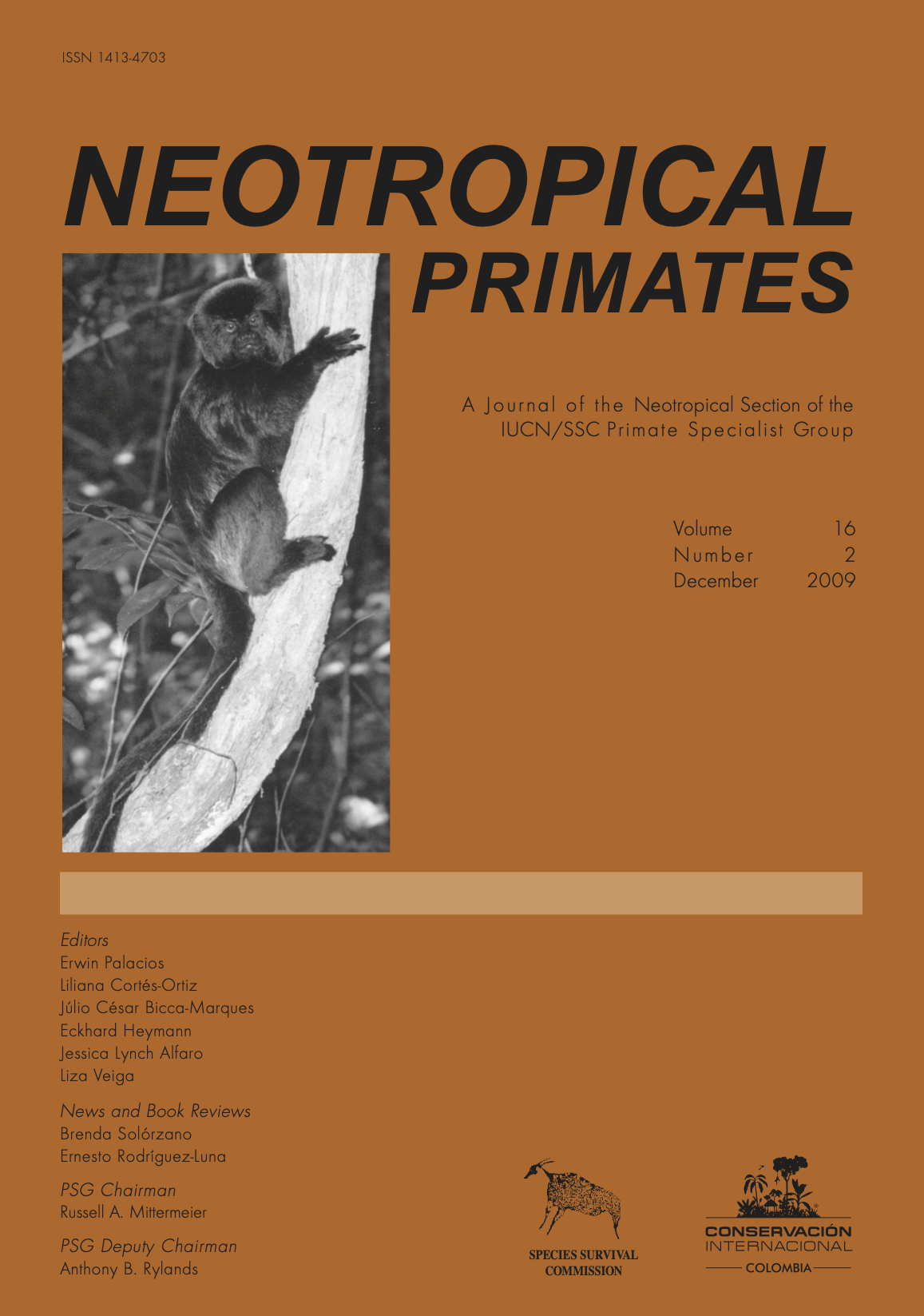Sympatric Alouatta seniculus and Cebus capucinus in an Andean forest fragment in Colombia: a survey of population density
DOI:
https://doi.org/10.1896/044.016.0201Keywords:
red howler, white-faced capuchin, premontane forest fragment, abundance, line transect surveysAbstract
Due to human activities, the Colombian Andean forests have lost about 85% of their original cover and very few species of primates persist in these fragmented landscapes. In the Western Cordillera, we evaluated the population density of Alouatta seniculus and Cebus capucinus by line transect census methodology, in a pre-montane isolated forest fragment of 559 ha, between 1200 to 1700 m of altitude. This is one of the few localities where the two species coexist naturally and the first study of their abundance in this cordillera. As we expected according to their diet and strategies, howlers had a higher density, 169 indv/km2 and an abundance of ~943 individuals. By contrast, the capuchins had a lower density, 13.5 ind/km2 with a population of ~76 individuals. Despite contrasting abundance, both species’ conservation in this isolated fragment will depend on landscape-level management to decrease isolation and increase habitat availability in the long term.

Downloads
Published
Issue
Section
License

This work is licensed under a Creative Commons Attribution-NonCommercial-ShareAlike 4.0 International License.


